With origins that trace back to ancient times, the captivating story of Japanese pottery mirrors the fascinating developments in Japanese history and traditions. First used in the Jomon period for preserving food and culinary purposes, Japanese pottery has transcended its mere functional aspects to become a symbol of a thriving civilisation, and from the Edo period (1603 – 1868), Japanese ceramics have served as a vessel through which the vibrant culture of Japan has flourished.
One reason Japanese pottery has captivated art admirers and collectors from all corners of the globe lies in its exquisite craftsmanship and aesthetic beauty. It is handcrafted by masters who value the natural beauty of materials and simplicity of forms. Contrasting with other countries, Japanese potters have often encouraged accidental imperfections which resemble what you may see in nature such as deliberately applying glazes and leaving them to find their course. This can be directly connected to the concept of Wabi-Sabi which is the appreciation of beauty found in simplicity, imperfection and transience.
Reflecting the distinctive characteristics of the locally available materials, Japanese pottery has developed unique styles and aesthetics influenced by the different clays, glazes, and firing methods. There are over 30 ceramic production areas in Japan, and among them, the distinct styles of Seto, Tokoname, Mino, Echizen and Kutani have long been seen as true representatives of Japanese pottery and continue to make a unique mark in the domestic and global world of ceramics.
In this article, we’ll start by introducing the 6 ancient kilns of Japan before delving into the various pottery styles found in Central Japan along with two other renowned ceramic production areas within the region. For those of you who have visiting Japan on your bucket-list, we have suggestions for famous pottery towns to explore and where you can take part in pottery workshops. Lastly we’ll explore how Japanese ceramics aren’t just for art galleries or museums as they can be enjoyed as tableware at homes or restaurants across the world and during the traditional Japanese tea ceremony.
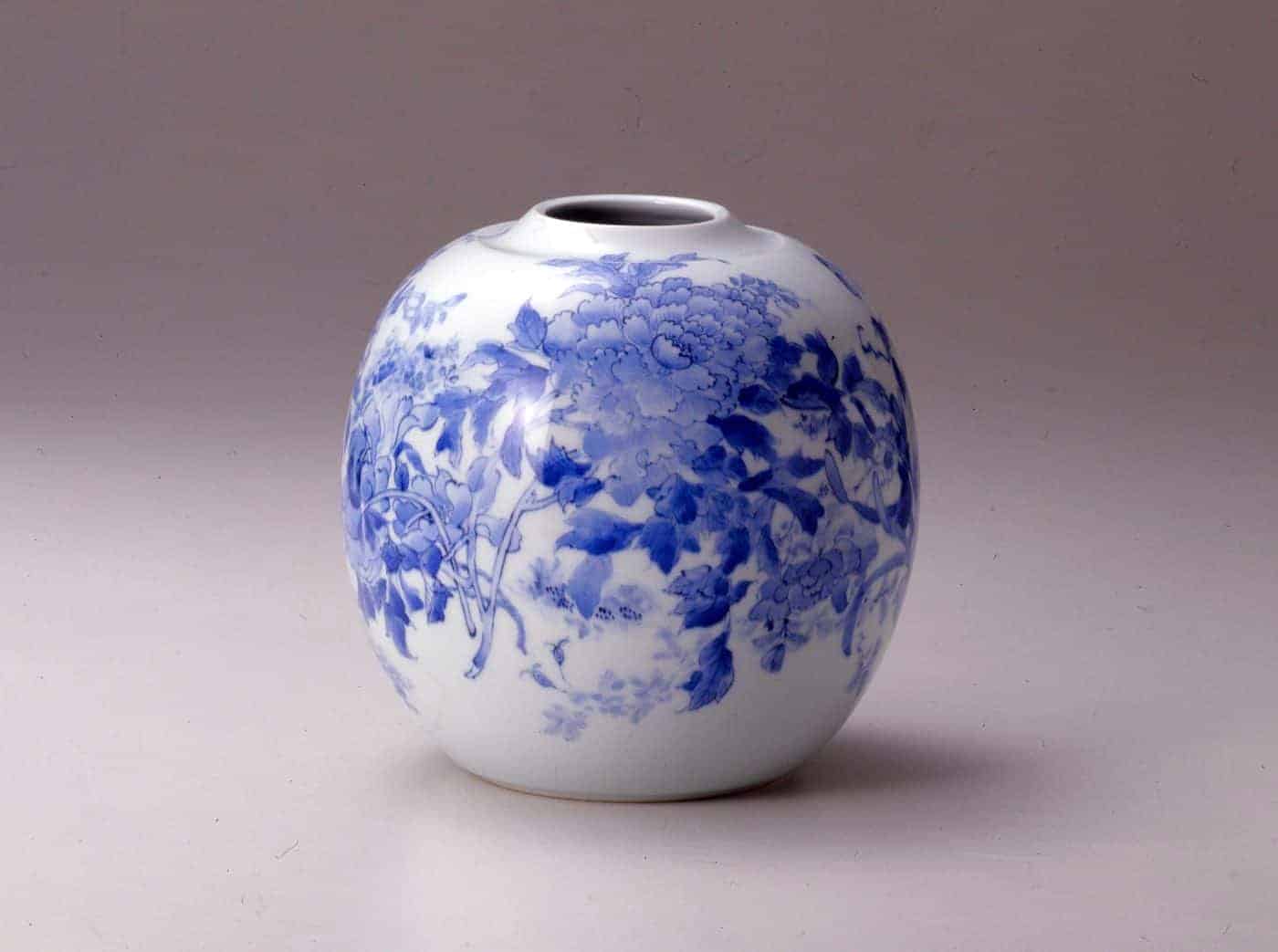
What are the most famous Japanese pottery styles?
Throughout Japan, in almost every prefecture there are pottery towns with long-standing pottery traditions and distinctive artistic flair. Among them, the Six Ancient Kilns have garnered recognition as exceptional production areas that have withstood the test of time, some even spanning over a millennium. These prestigious kilns, classified by the esteemed Japanese pottery scholar Koyama Fujio, represent the most remarkable ceramic craftsmanship in Japan. The Six Ancient Kilns, which are also recognised as Japan Heritage sites, are:
- Seto (Aichi Prefecture)
- Echizen (Fukui Prefecture)
- Tokoname (Aichi Prefecture)
- Shigaraki (Shiga prefecture)
- Tamba (Hyogo prefecture)
- Bizen (Okayama prefecture)
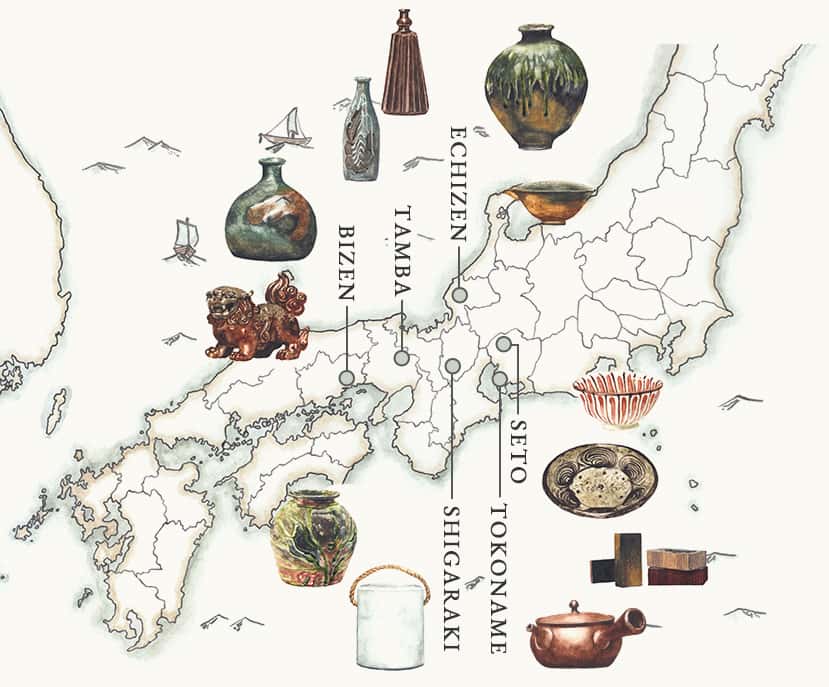
The Central Japan region immediately stands out for being the home of three Ancient Kilns in Aichi and Fukui prefectures, marking its historical importance in Japanese traditional ceramics. This can be credited to the abundance of clay found in the region, the undulating landscape that lends itself to kiln construction, and the ready access to firewood. The region continues to be of significance in modern ceramics, as the art of pottery-making is expertly passed down from one generation to the next and attracts aspiring ceramicists yearning to learn at a ceramic school in the area.
Next, we’ll take a deeper look into the distinctive styles of the 3 Ancient Kilns of Central Japan, before turning our attention to the unique pottery of Kutani in Ishikawa prefecture. Finally our focus will shift towards Gifu prefecture’s Mino ware, which holds a strong connection with Seto, and has emerged as the foremost producer of Japanese pottery in recent years.
Seto ware

Boasting a pottery tradition that spans almost a thousand years, Seto in Aichi Prefecture is one of the oldest and most revered pottery towns in Japan. The origins of Seto pottery can be traced back to the late 12th century, and it played a pivotal role in shaping the aesthetic landscape of Japanese ceramics.
One of the defining characteristics of Seto pottery is its diverse range of glazes, each contributing to the distinct appeal of the ware. Setoguro, or black Seto ware, showcases a deep, lustrous black glaze that highlights the simplicity and elegance of the form. Within the broader category of Seto ware, known as Setoyaki, you can find a diverse array of styles, including both glazed and unglazed pieces, such as the prominent Seto Sometsuke ware (Seto blue and white porcelain).
Known for its exceptional craftsmanship, the town’s kilns produce an array of items, from tea bowls and plates to decorative pieces that has made Seto pottery highly sought after in Japan where it is often used in traditional Japanese tea ceremonies. Its popularity extends beyond the borders of Japan, and Seto ware gained international recognition after being showcased at several world fairs during the Meiji Era (1868 – 1912).
Tokoname ware
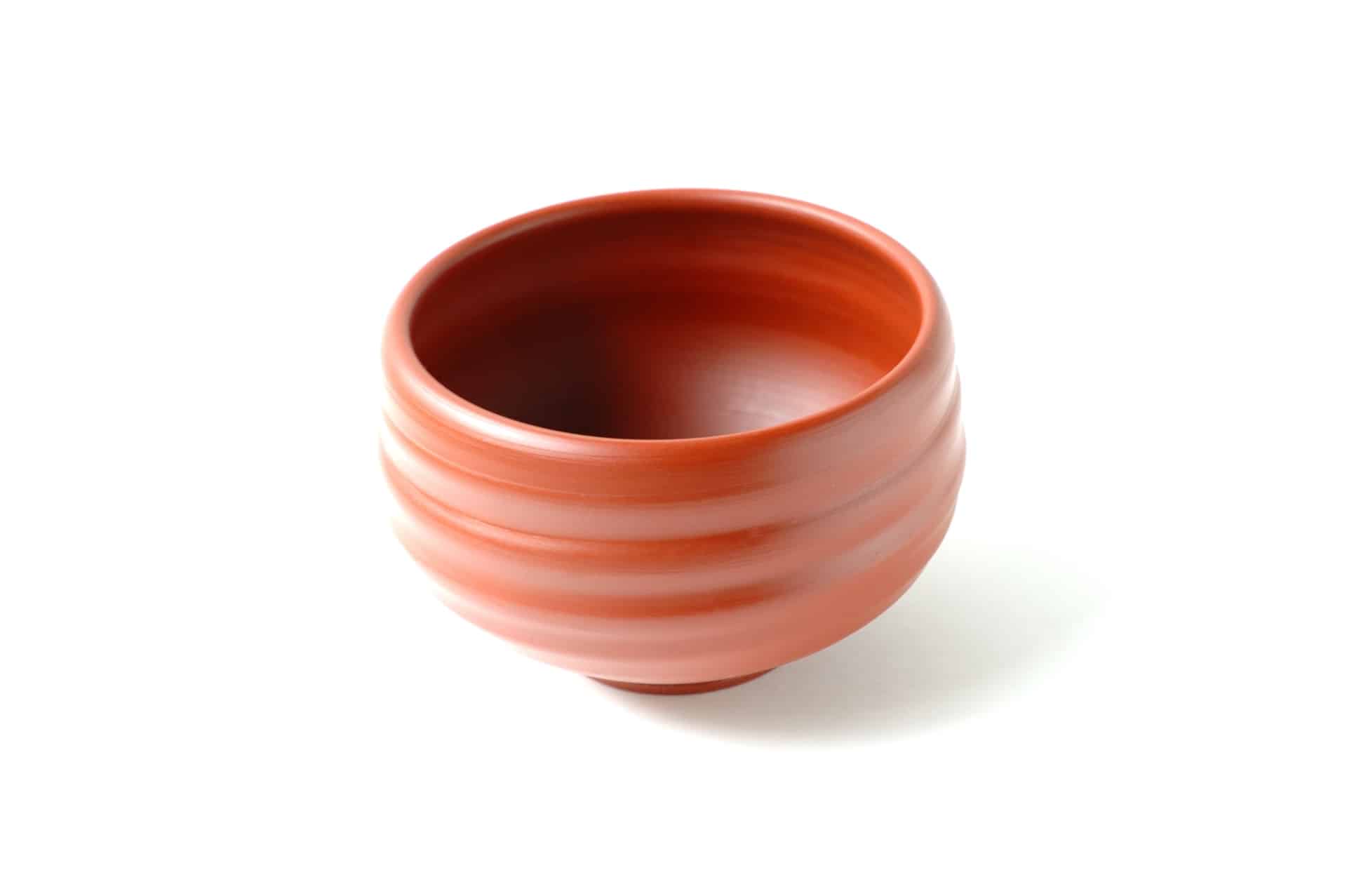
Tokoname, positioned near the Pacific coast in the south of Aichi Prefecture, has been a bastion of pottery production for over a millennium. Tokoname pottery, or Tokoname-yaki, is renowned for its iron-rich red clay, known as shudei, and the distinctive unglazed surfaces that highlight the natural beauty of the material. The town’s kilns produce both functional and artistic pieces, but perhaps its most celebrated creation is the Tokoname kyusu – a traditional Japanese teapot.
The porous nature of the shudei clay enhances the flavour of tea by absorbing its astringency and producing more mellow flavours, creating a unique and prized vessel for tea enthusiasts. Tokoname kyusu is not merely functional; it is a work of art that reflects the marriage of form and function, embodying the Japanese principle of “chaji,” which is the art of tea, or a formal tea gathering.
Tokoname potters take pride in their commitment to traditional techniques while embracing innovation with even glazed Tokoname ware emerging in recent years. Modern Tokoname pottery includes a range of styles, from classic tea sets to contemporary artistic creations that showcase the versatility of the craft. This delicate balance between honouring tradition and adapting to the needs of the present defines the enduring appeal of Tokoname pottery.
Echizen ware
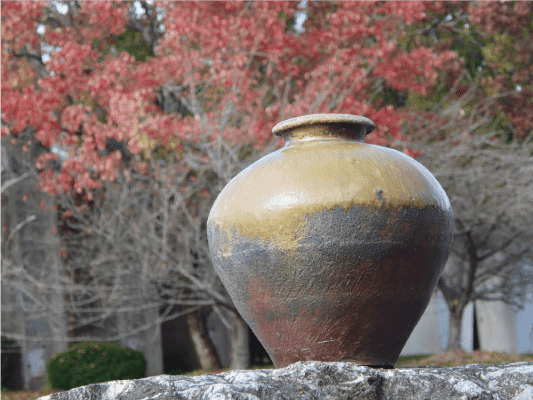
Echizen, nestled in Fukui Prefecture, boasts a pottery tradition that spans more than eight centuries. By the late Muromachi period (1467 – 1573), Echizen’s unglazed pottery gained recognition for its exceptional quality. The secret lay in the unique composition of Echizen’s soil, which produced highly-vitreous wares that were resistant to leakage. This led to an enormous kiln over 25 metres across being built, allowing for the mass production of up to five tons of wares at once, which was then shipped along the Sea of Japan.
Since its peak, everyday life items such as pots, jars, and tea utensils, with their rustic charm and practical design, have become synonymous with the region’s pottery tradition. The potters of Echizen place a strong emphasis on preserving traditional techniques including unique patterns that are created through firing with straw and ash, as well as a unique coil-molding technique where clay is layered to form different shapes.
While Echizen pottery embodies a timeless elegance that pays homage to centuries-old traditions, the region’s potters are not immune to innovation. Contemporary Echizen potters explore new forms and firing methods, while demonstrating a commitment to the simplistic texture and appearance that enthusiasts love.
Kutani ware
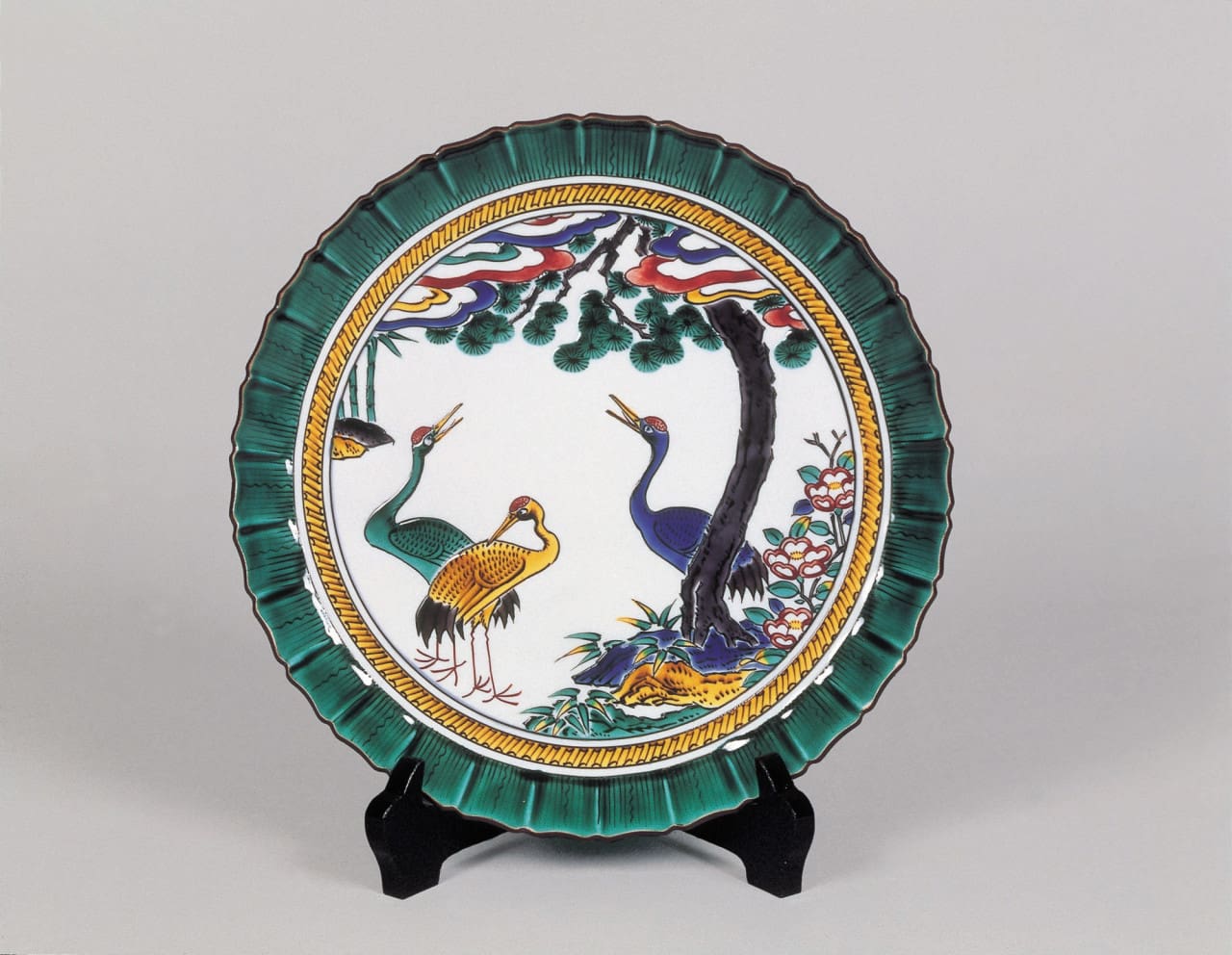
Developed in Ishikawa Prefecture on the sea of Japan coast, Kutani ware is famous for its distinctive porcelain style and vibrant designs that distinguish it from the other pottery regions of Central Japan. What sets Kutani ware apart is its use of overglaze painting and the bold incorporation of five striking colors – red, green, yellow, purple, and Prussian blue. Additionally, the opulence of Kutani pottery is heightened by its characteristic gold patterns, known as “Kinrande”, which were originally introduced during the Meiji Era (1868 – 1912).
Unlike some other Japanese pottery traditions that may favour minimalism or subtle aesthetics, Kutani pottery takes a different path, embracing opulence and intricate designs. This choice is believed to be a reflection of a desire to escape the memories of the severe winters in the Hokuriku region.
Another unique characteristic of Kutani ware is the incorporation of fine calligraphy, a tradition that was first established by Oda Seizan, who skillfully inscribed classical Chinese poems onto tea and sake cups. This unique art form was then passed down to his son-in-law, Tamura Kinsei, who in turn later taught it to his grandson, Tamura Keisei. Designated an Intangible Cultural Property by Ishikawa Prefecture in 2005, Keisei continues to practice the art and expanded to decorating the exteriors of various vessels such as incense burners with calligraphy.
Mino ware

Located in southeastern Gifu Prefecture, Mino stands as another influential hub in the landscape of Japanese pottery. Mino pottery, often referred to as Mino-yaki, is renowned for its remarkable diversity, encompassing 15 distinctive styles meticulously crafted in various kilns across the region. With a long history of production dating back to the 7th century, Mino gained prominence as artisans from Seto sought refuge in the area during the wars of Sengoku period (1467 – 1573), under protection of the Toki lords.
One of the notable styles within Mino pottery is Shino ware, characterized by its thick milky-white and orange glazes, as well as the presence of small pin holes. Each creation reflects a spontaneity and organic allure, thanks to the remarkable glazing technique employed. On the other hand, Oribe ware, another captivating Mino style, showcases striking green, white or black glazes with designs based on nature or daring geometric patterns, representing the cutting-edge aesthetic that flourished during the Momoyama period (1573 – 1600).
With its versatility and wide range of styles, Mino pottery has established itself as a significant player in the realm of functional and artistic ceramics. Potters from this region relentlessly push the boundaries of glazes, shapes, and firing methods, perpetually seeking innovation. Notably, the introduction of mass production during the Meiji period (1868 – 1912) has propelled the Mino area to become the leading producer of ceramics, responsible for 50% of the total production of ceramics in Japan in the last decade.
Japanese Pottery Activities
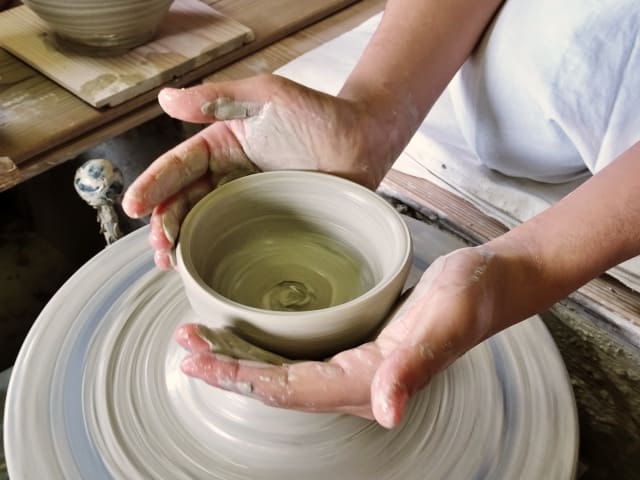
Central Japan, often overshadowed by the bustling cities of Tokyo and Kyoto, is a hidden gem for ceramic enthusiasts seeking authentic experiences and exquisite craftsmanship. The region boasts a diverse range of pottery-related activities that provide an immersive journey into the world of Japanese pottery with opportunities to even get behind the pottery wheel.
Visiting Japanese Pottery Museums
One of the best ways to delve into the artistry of Central Japan’s pottery is by visiting the numerous pottery museums and galleries gracing the region. These cultural hubs unveil inspiring collections of both traditional and contemporary ceramics, providing visitors a comprehensive understanding of the local craftsmanship. Here is a list of three in the area that we recommend visiting.
- Located in Tokoname, The INAX Museums was established by the LIXIL Corporation, a prominent player in ceramic production. The Tile Museum, one of the six museum facilities at the INAX Museums, offers a unique experience with its permanent exhibitions showcasing its extensive collection of 7000 tiles from not only Japan but various corners of the globe, and its eye-opening collection of antique ceramic toilets is sure to leave visitors with a new perspective.
- At the Seto-Gura Museum visitors can immerse themselves in the evolution of the pottery crafted by the skilled hands of Seto artisans and see how it earned its international reputation. The impressive display area highlights the quality of Seto wares cherished by the ruling samurai class and affluent merchant classes, and you can enjoy the vibrant atmosphere of Seto’s prosperous 20th century as you explore the meticulously recreated town.
- When it comes to exploring the creations of contemporary artists like Takashi Ikura, Toshimi Imura and Masato Komai, the Tajimi City Cultural Atelier gallery VOICE in Gifu is a must-visit destination. This gallery offers regular exhibitions that introduce the unique artistic expressions of Japanese ceramic creators, experimenting with various genres and providing their own interpretations of recent market trends.
Buying Japanese Pottery
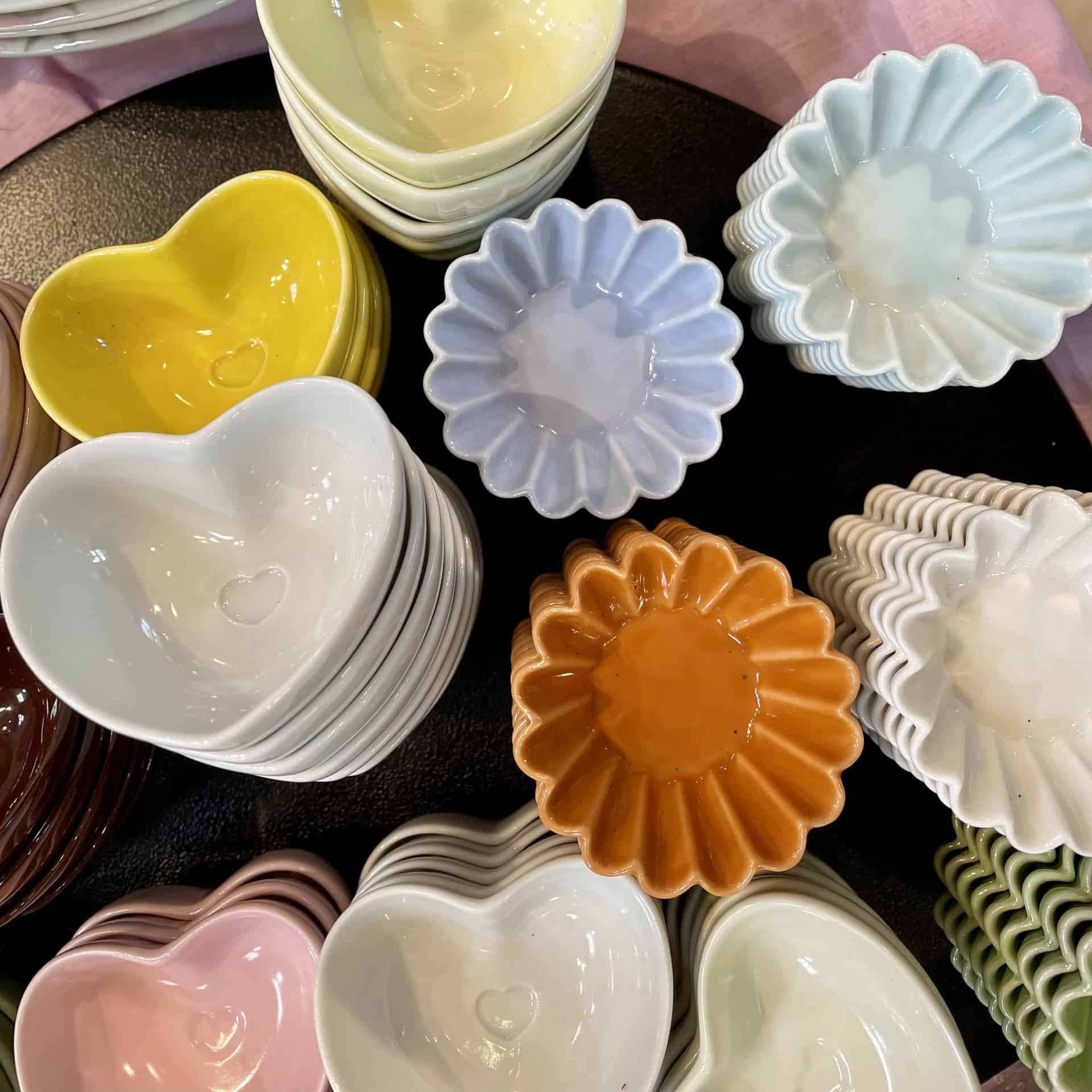
To truly capture the essence of Central Japan’s pottery heritage, one cannot underestimate the value of acquiring ceramics directly from local artisans. Many towns and cities in the region have charming pottery shops including those located in gift shops within pottery museums where visitors can purchase unique and lovingly handcrafted pieces. Whether it’s a delicate teacup, a decorative vase, or functional tableware, each item reflects the distinctive styles and techniques of Central Japan’s pottery traditions. For your convenience, we’ve selected 3 shops in Central Japan for those looking to purchase Japanese pottery items to take home.
- The Setogura Ceramic Plaza is one of the most notable ceramic stores in Seto. Within its Collective zone, you can buy everyday dining tableware that come in a wide array of colours to match every season, while The Pop-Up booth has a range of Seto tableware and ceramic ornaments that changes every 3 months. Stepping into the Factory zone allows you to learn more about the clay, glazes and techniques used in the Seto ware being sold.
- Situated inside the Fukui Prefectural Museum of Ceramics is Clays, a unique select shop selling the remarkable works of 40 talented ceramic artists from Fukui Prefecture. The exquisite collection of Echizen ware available at the store is carefully curated, ranging from functional everyday utensils to anniversary gifts. While visiting, be sure to see the displays of Echizen ware and the model of Kuemon Kiln in the museum.
- Nestled in the Ceramic Mall Park of Tokoname is a specialist store that is dedicated solely to Japanese style Kyusu teapots. With a rich history spanning over half a century, Tokoname Isobe has established itself as a purveyor of both functional and visually stunning creations, and proudly showcase products from local teapot artisans and skilled craftsmen, making it a haven for tea enthusiasts seeking exquisite works of art.
Japanese Pottery Experiences
To truly immerse oneself in the craft, joining a pottery workshop is an enriching experience. Local artisans are often eager to share their skills and knowledge with enthusiasts of all levels. Participants can try their hand at shaping clay, glazing, and firing, gaining a deeper appreciation for the meticulous process behind creating these works of art.
Premium Pottery Making Near Inuyama Castle
This premium pottery making experience is perfect for combining a day trip visit to the national treasure of Inuyama castle with a chance to unleash your creative spirit at a family-owned pottery studio nearby. Under the guidance of your friendly teacher, you’ll be crafting a unique cup, bowl, or vase, and after learning Inuyama pottery painting you’ll be designing your very own sake cup. Once ready, your creations will be sent to you by post, and before leaving you’ll get to select and take home a beautiful matcha bowl crafted by a master artisan.
Private Workshop with Ikuhiko Shibata
With a strong connection to the roots of Mino pottery, Ikuhiko Shibata is a skilled potter hailing from Tajimi. Blending the age-old traditions of Mino ware with his own creative flair, he brings a fresh perspective to tableware and everyday products. Alongside his frequent journeys to the United States, Ikuhiko hosts a range of workshops that showcase his skills, from one day sessions where you can learn his techniques to immersive three-day sessions which allow for more in-depth explanations and experimentation. Please note that workshops require reservations in advance through the Tajimi Tourism Association website.
Ho-Ca Extensive Japanese Pottery Courses
For more seasoned potters or beginners looking to escape their daily lives, the Home of Clay Art (HOCA), is a unique way to enjoy learning pottery while staying in Tajimi city. Courses run for one month with a range of options to cater to all levels. Beginners can enroll into the Shino Course which introduces the Shino pottery style or delve into Raku pottery which is popular in the tea ceremony world. Then for intermediate students and above, the Porcelain Course covers how to make Sometsuke and Celadon glazed pottery.
Walking paths in Japanese Pottery Towns

Strolling through pottery towns and cities in Central Japan allows you to discover the hidden studios, workshops and ceramic artwork displayed on walls that demonstrate the region’s dedication to preserving and evolving its rich pottery heritage. Visitors can witness artisans at work, take photos of wall art, and even purchase pottery directly from the workshops while enjoying a leisurely stroll. Two pottery hubs well known for their Pottery Footpaths walking courses or paths are Tokoname and Seto.
Tokoname Pottery Path
In the early 1970s, the Tokoname Pottery Path was created to showcase the traditional houses, workshops and kilns in Tokoname. Preserving its authentic charm to this day, the path through the charming backstreets has steadily grown in popularity with its pottery adorned path walls, creative pottery shops and galleries.
Walking the path takes approximately 2 hours and highlights include Dokan Zaka, a picturesque path lined with earthenware pipes and Showa era tiles, countless beckoning cat figures and the towering Tokonyan mascot, which is a maneki neko or good luck cat figure, standing proud at a height of nearly 4 meters. Along the way you’ll have the chance to tour inside Noborigama, once Japan’s largest climbing kiln which promises an insightful experience into the heart of this ancient pottery town.
Kamagaki no Komichi in Seto
Seto city is filled with a multitude of pottery studios and art galleries with several walking courses connecting them waiting to be explored. As you venture through the vibrant city streets, don’t miss the Kamagaki no Komichii (Path of Kamagaki). This photogenic stone wall inlaid with intricate kiln tools stretches an impressive 400 meters, and the sole place in Japan where old tools for crafting ceramics find new life as building materials, adding a touch of history to its structure.
On your journey, make sure to not overlook the Kamagaki no Komichi Museum which was once a potter’s house from the late 19th century, but has been carefully restored. When you visit, take a moment to appreciate the preserved “Doma” earthen floor, where an ancient cooking stove still stands and the bathroom decorated with Hongyo Tiles which are said to be Japan’s first modern tiles.
Enjoying Japanese Pottery Festivals
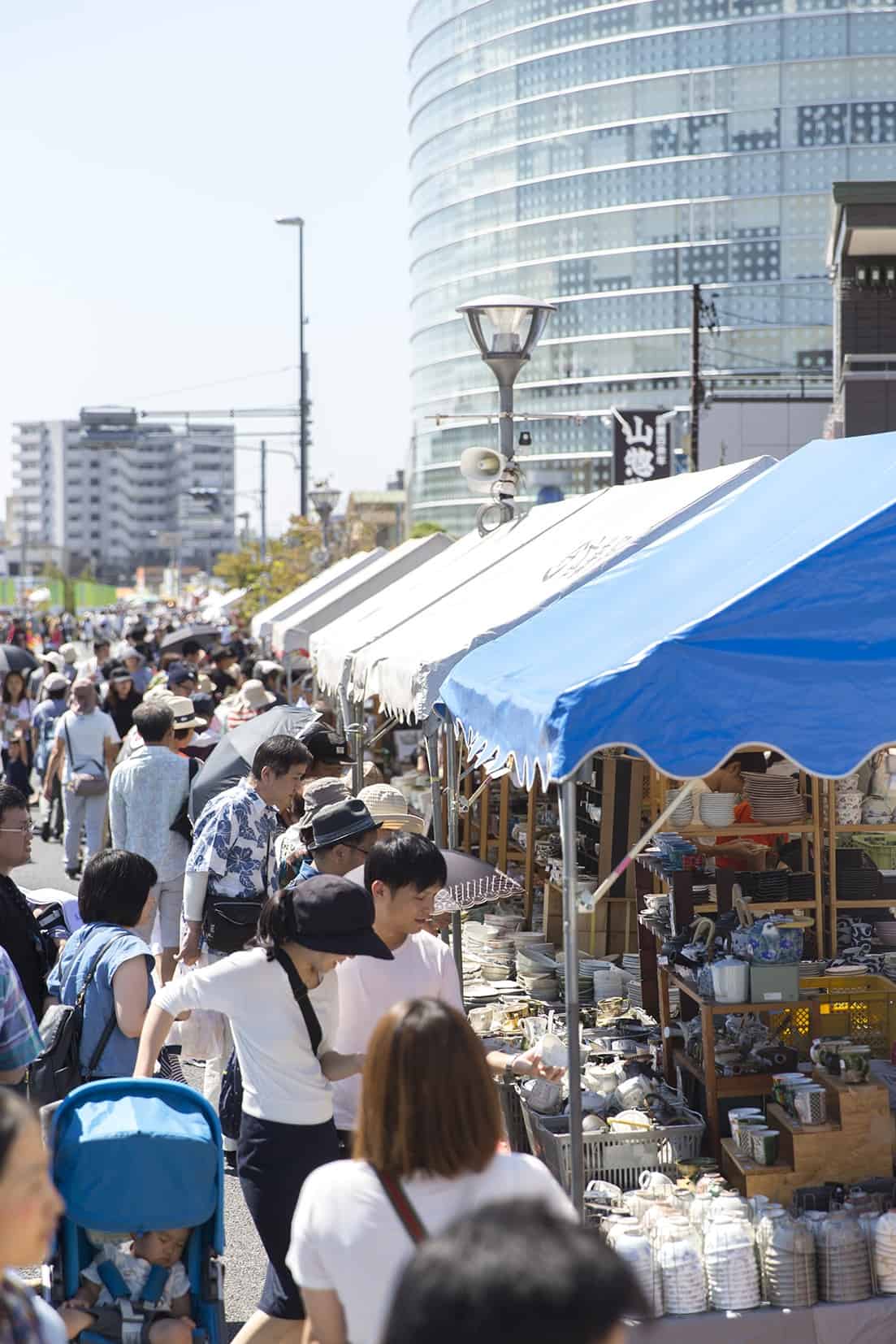
If your trip to Japan happens to align with a pottery festival, attendance is a must to witness the vibrant energy and creative spirit for Japanese pottery. These festivals, often held seasonally, bring together artisans, collectors, and enthusiasts from all over the region. Visitors can enjoy exhibitions, live demonstrations, and even participate in hands-on activities, creating memorable moments within the heart of Central Japan’s pottery culture. In this section we highlight two of the biggest in the region.
Setomono Festival
Commencing in 1932, the Setomono Festival has established itself as one of the largest attended pottery and ceramics events in Japan. This annual festival lasting over two days in September transforms the banks of the Seto River into a bustling market featuring over 200 merchants specialising in pottery and ceramics. The market offers a wide selection of high-quality tableware, ranging from plates and bowls to cups, saucers, and mugs, all at remarkably discounted prices. As twilight descends on the opening night of the festival, visitors are treated to a spectacular fireworks display with 1000 fireworks that illuminate the sky and stores lining the river.
Tajimi Ceramics Festival
Every April, the city of Tajimi comes alive with the vibrant Tajimi Ceramics Festival, when the festival draws in over 20,000 pottery lovers from around Japan who are attracted by hundreds of ceramics stores lining the city streets offering exquisite Mino ware at unbeatable prices. From practical everyday items to office essentials and charming plates and bowls for children, the range of Mino ceramics caters to every need. To enhance the festival experience, a dedicated event space is set up, complete with engaging activities and captivating street performers, providing endless entertainment for festival-goers.
Appreciating Japanese Pottery

Exploring the rich world of Japanese pottery and ceramics offers countless opportunities to enjoy and deepen your appreciation for this timeless art form. Along with learning about its history and familiarising yourself with the various styles, we would highly recommend incorporating Japanese pottery into your daily lives at home whether that be displaying flowers or serving a meal or dessert on a handcrafted piece.
Additionally, dining in Japanese restaurants both in Japan and around the world, allows you to discover the beauty of Japanese ceramics that enhance your dining experience, as Japanese restaurants take pride in serving meals on ceramic ware often from their preferred production areas, elevating the dining experience and allowing you to savour not only the flavours but also the artistic craftsmanship that accompanies each dish.
As we conclude this exploration into the world of Japanese pottery, we hope that the article has provided you with insights on the essential information you need to know on Japanese pottery and ceramics, the diverse styles of the pottery artisans of Central Japan, and how to experience Japanese pottery when visiting the region and in your everyday lives.
If you have any questions or comments, please feel free to add them in the comments section below. For those looking for other exciting destinations to explore in Japan we recommend checking our travel page. Alternatively, if you are in search of accommodations in Nagoya, which is a convenient location for Central Japan, we have curated a list of highly recommended hotels for your convenience.
Note: In this article, we have mainly used the word of pottery, Yakimono in Japanese, unless where we thought it would be more appropriate to use other words, such as ceramic or porcelain.


